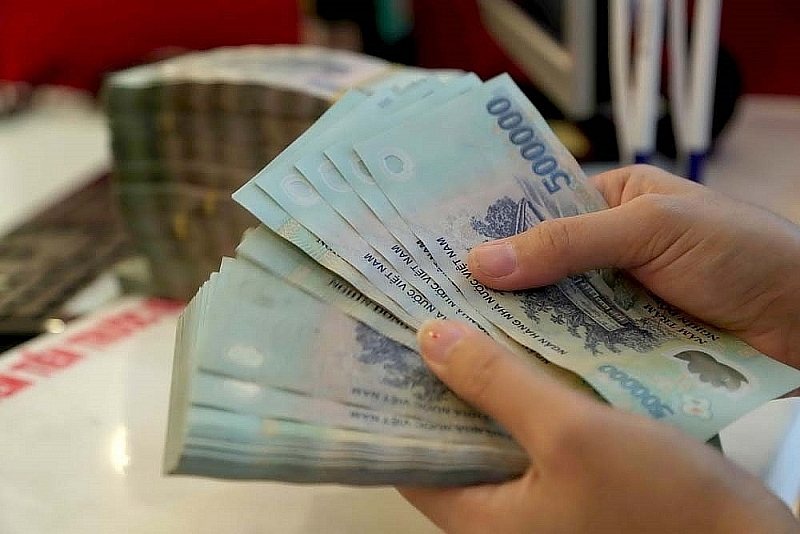State Bank wants to "legalize" bad debt handling
The State Bank of Vietnam (SBV) has officially proposed a Law on Handling Bad Debts of Credit Institutions (CIs), when the Covid-19 pandemic may increase bad debts and Resolution No. 42 of the National Assembly on the pilot of bad debt settlement is about to expire.
 |
|
According to the State Bank of Vietnam, by the end of May 2021, the bad debt ratio on the balance sheet was at 1.77%. Photo: ST |
More than VND6,000 billion of bad debts are handled every month
In a report assessing the impact of the policy on a Law on Bad Debt Handling, the State Bank assessed that the handling of bad debts was in accordance with Resolution No. 42/2017/QH14 on piloting bad debt settlement of credit institutions (Resolution No. 42/2017/QH14) has achieved positive results.
The total bad debt determined according to Resolution 42 of the whole system of credit institutions as of May 31, 2021, was VND425.4 trillion, down 3.4% compared to the end of 2020.
From August 15, 2017 to May 31, 2021, credit institutions have handled VND353.81 trillion of bad debts determined in Resolution 42 (excluding bad debts handled by using loss provisions for bad debts). On average, each month, the whole system can handle more than VND6 trillion of bad debt, much higher than VND3.52 trillion per month compared to the period without Resolution 42.
According to the report of the State Bank, before Resolution 42, bad debts of the credit institution system were mainly handled by loss provisions, measures to handle bad debts through handling collateral and debt repayment of customers was not high. However, with Resolution 42, bad debt settlement by customers' voluntary repayment increased sharply, reflecting a strong improvement in customers' sense of debt repayment, accounting for 39.28% of total debt according to Resolution 42 handled, much higher than 22.8% in the previous five years.
Bad debt will increase
However, the monetary authority acknowledged that, in the context of the Covid-19 pandemic, it would lead to a decline in the debt repayment ability of borrowers, and bad debts of credit institutions are likely to continue to increase sharply in the future.
According to the State Bank of Vietnam, by the end of May 2021, the bad debt ratio on the balance sheet stood at 1.77%, up from 1.69% at the end of 2020.
Vietnam's growth model is dependent on the size of investment capital; which mainly relies on credit from the banking sector. If the difficulties and obstacles in the legal framework related to bad debt settlement have not been removed, it will not be possible to open capital.
Moreover, the State Bank also said that in the process of implementing the Resolution, there were still difficulties and obstacles related to the legal basis and the implementation. Therefore, stopping at the pilot Resolution led to the priority of applying specialized laws in some relevant agencies.
Resolution 42 is only valid for five years, meaning it would expire on August 15, 2022. At that time, the entire mechanism of bad debt handling under Resolution 42 would end. Credit institutions and VAMC would have to handle debt according to relevant legal documents.
Therefore, this agency was concerned that the termination of the bad debt handling mechanism under Resolution 42 would impact customers' sense of self-payment. In addition, the termination of the right to seize property under Resolution 42, without applying the summary proceedings at the Court would incur costs for the Court because the property disposer would have no other choice but the Court. Discontinuing the policy of applying the condition of transferring collateral as a real estate project would lead to a difficult transfer of collateral for a bad debt in a real estate project.
Moreover, if the credit institution withdrew the accrued interest, immediately allocating the difference between the debt value and the debt price, it would adversely affect the financial situation, causing the credit institution to fall into bankruptcy when the accrued interest must be withdrawn and the difference between the value of the debt and the price of the debt is large, affecting the safety of the system.
Therefore, with the above impacts, the State Bank proposed to legalize the provisions of Resolution 42 in the form of submitting to the National Assembly to develop a “Law on handling bad debts and handling security assets of credit institutions and branches of foreign banks, organizations with 100% of charter capital of the State established by the Government” to handle debts of credit institutions.
Accordingly, the pilot provisions in Resolution 42 will be specified in the Law on handling bad debts of credit institutions, creating a stable and long-term legal corridor for credit institutions to handle bad debts, reducing conflicts between provisions of this Law with other specialized laws when this Law takes precedence.
The promulgation of a law on bad debt handling not only helps credit institutions recover debts but also ensures the interests of depositors and maintains the stability and safety of the banking and national financial system.










